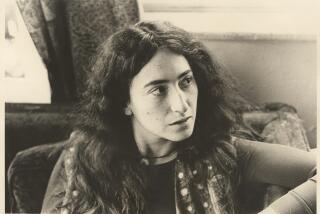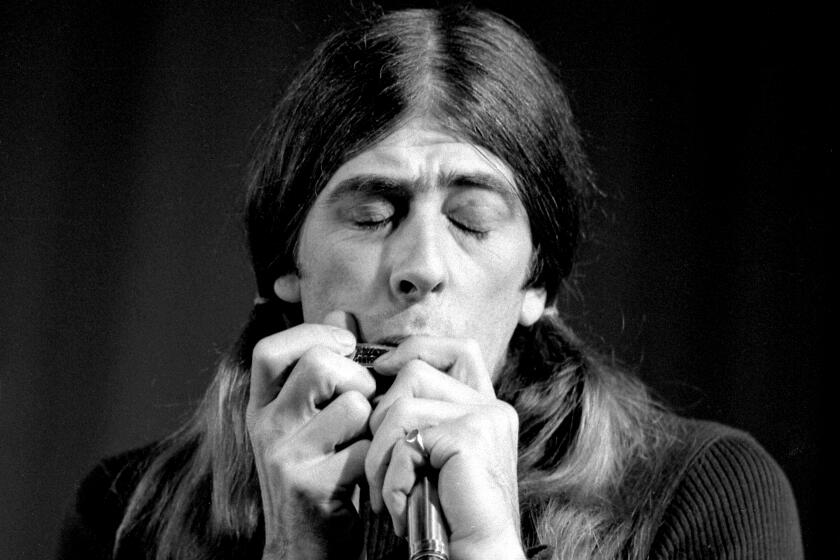Clancy Sigal, novelist who wrote ‘Going Away’ after being blacklisted in Hollywood, dies at 90
When he was blacklisted in Hollywood, Clancy Sigal got in his car, pulled out of L.A. and drove toward New York in a soul-searching journey across the back roads of America.
The trip would provide the roadmap for “Going Away,” a memoir of a young man’s explorations of his own past and the mood of a nation, captured in visits with old friends, former enemies, union activists, radicals, oddballs and those whose life momentum had been upended by the so-called Red scare in 1956.
For the record:
2:35 p.m. July 20, 2017An earlier version of this story said Sigal died at the age of 91. He was 90.
In the eyes of some readers, it became the more sober counterweight to “On The Road,” Jack Kerouac’s defining road trip into postwar America.
In a career that stretched for decades, Sigal wrote more than a half a dozen novels and memoirs; worked as a Fleet Street journalist in London; became the soul mate of Nobel Prize-winning author Doris Lessing; took acid trips with radical psychiatrist R. D. Laing; wrote scores of newspaper commentaries, columns and book reviews; taught longform journalism at USC; and wrote screenplays with his wife, including the film “Frida.”
When he died July 16 in Los Angeles at the age of 90, Sigal had recently completed his latest — and still unpublished — novel, a look back on his decades as an expatriate in London. His published books included “Weekend in Dinlock,” “Zone of the Interior,” “The Secret Defector” and “Black Sunset: Hollywood Sex, Lies, Glamour, Betrayal and Raging Egos.” “Going Away” was nominated for a National Book Award.
“Writing, to him, was like breathing,” his wife, Janice Tidwell, said in an interview Wednesday. “He did it all the time.”
His books were often cathartic adventures, a writer dealing with the sharp edges of an imperfect life and the super-sized personalities and adventures that he was drawn to. “If there was energy, he would head there,” his wife said.
Sigal was born Sept. 6, 1926, in Chicago, the son of an unwed couple. While his father was largely absent, his mother, Jennie — a rabble-rousing union activist who seemed like a Category 5 storm to a young Sigal — raised her son while on the move, dragging him to union rallies, sweatshop strikes and noisy streets protests. It would be decades before he could fully digest her complexities and write about her in “A Woman of Uncertain Character.”
While still a teen, Sigal joined the Communist Party, which at the time was involved in union organizing and worker’s rights. It succeeded in angering his mother, an avowed socialist, and drawing the attention of the government.
By the time Sigal came west to attend UCLA, the FBI had already opened a file on his activities and had assigned a pair of agents to tail him, his wife said. It was an era of whipped up suspicions and with the prodding of Sen. Joseph McCarthy and the House Un-American Activities Committee, the FBI was on the prowl for communists, spies, people with uncertain intentions. The lives of hundreds of people, from Hollywood screenwriters to leading scientists, were upended.
Though Sigal was not yet a writer, he had become a successful Hollywood talent agent with clients like Humphrey Bogart. His wife said when the FBI finally released a redacted copy of Sigal’s file, it bordered on the absurd, filled with sweeping conclusions that the young talent agent was a spy.
So Sigal quit Hollywood, made his trip to New York and then moved to Paris, and then London. It was supposed to be a weekend visit. He ended up staying for nearly three decades.
In England, he moved in with Lessing, attended protest rallies and anti-nuclear demonstrations and spent years undergoing strange and unorthodox therapy sessions with Laing, then a leader in the anti-psychiatry movement. Together they took LSD and sometimes even swapped roles — Sigal becoming the therapist, Laing the patient.
In their first meeting, Sigal wrote in “Zone of The Interior,” the Scottish Laing kicked off their first session by saying: “Ye’ve got the makings of a good schizophrenic.”
Sigal told the Chicago Tribune in a 1992 interview that he finally reached his own diagnosis on his mental health: “I’m this perfectly ordinary Jewish neurotic depressive anxiety-ridden professional writer.”
Sigal found his way back to L.A. in 1984 when — then a reporter for the Observer — he returned to cover the Summer Olympic Games. He taught writing courses at USC and UC Santa Barbara; married Tidwell, a writer; wrote commentaries and book reviews for the Los Angeles Times and other publications; and finally wrote “A Woman of Uncertain Character,” a story he said had been struggling to find its way onto paper since he was a youth.
Largely set in Chicago’s urban-tough Lawndale neighborhood, the book captures Sigal as a feckless youth who got into trouble routinely, but was just bright and cagey enough to talk his way right out of it. His mother, he wrote, was a commanding force of nature — “a warrior queen, a crazy bohemian.” Her personality shadowed him for years.
“It seemed as if all that anger, resentment, and pent-up fury she could never articulate, for fear of being consumed by it, shot straight into my veins,” he wrote.
Tidwell said her husband seemed possessed of boundless curiosity and energy, and was wonderfully unpredictable.
When he took her to London, she thought the sightseeing might include the London Bridge or Westminster Abbey.
“And of course it didn’t,” she said, laughing. “He took me to Marx’s tomb and the Freud museum.”
Sigal is survived by his wife and a son, Joe.
More to Read
Start your day right
Sign up for Essential California for the L.A. Times biggest news, features and recommendations in your inbox six days a week.
You may occasionally receive promotional content from the Los Angeles Times.







